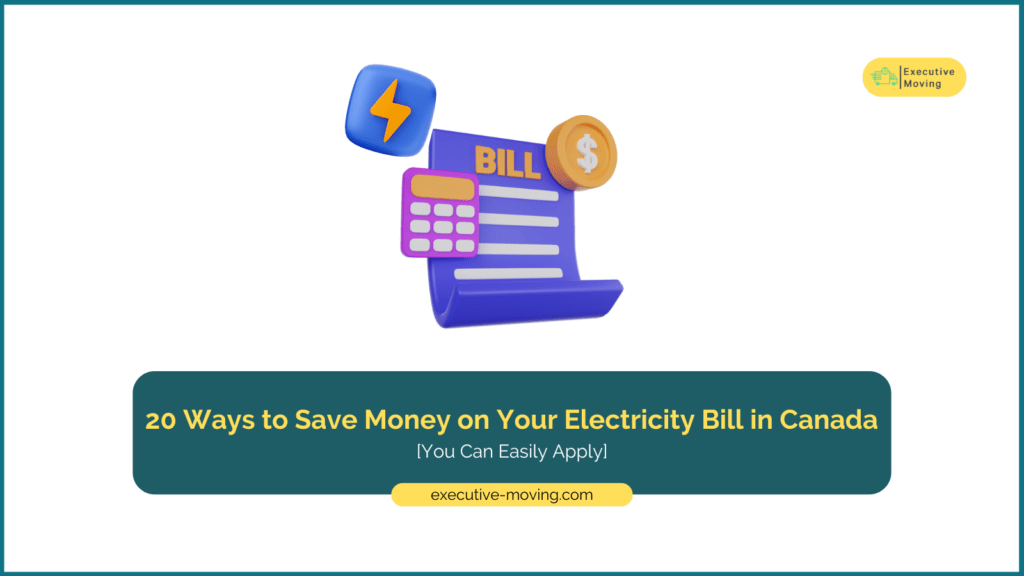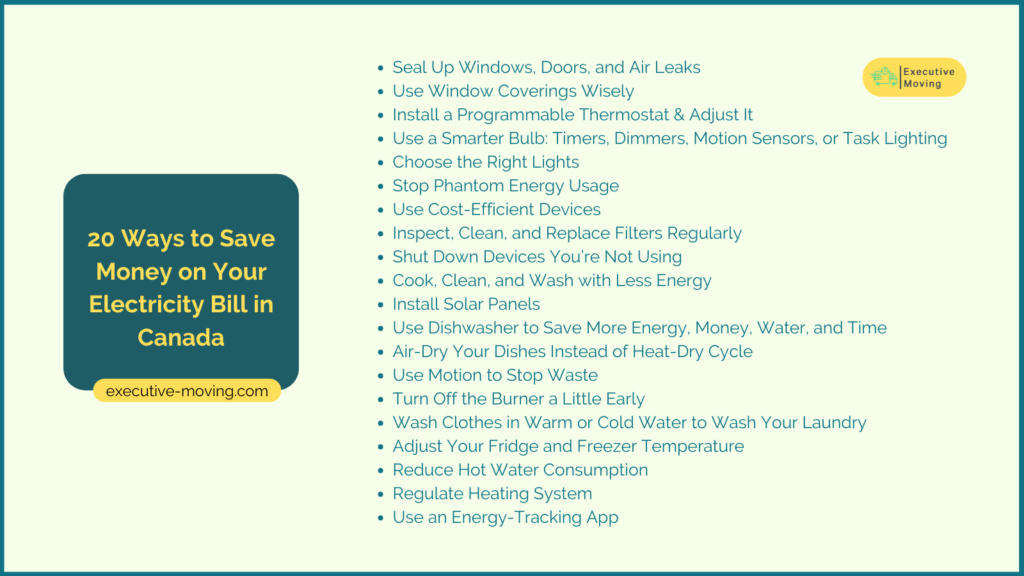1. Seal Up Windows, Doors, and Air Leaks
Air leaks can drive up your heating costs in winter and cooling costs in summer.
Sealing gaps around windows and doors with caulk or weatherstripping keeps warm air in (or out, depending on the season) and helps lower your energy bills.
2. Use Window Coverings Wisely
Curtains or blinds are your best friends for saving money on utility bills. They can keep the heat out in summer and trap warmth in winter.
Close the curtains in the evening and during peak sunlight to keep things comfortable without cranking the AC or heater.
3. Install a Programmable Thermostat & Adjust It
A programmable thermostat can be a lifesaver. Set it to automatically reduce temperatures at night or when you’re not home. Save up to 10% on heating costs with strategic settings.
4. Use a Smarter Bulb: Timers, Dimmers, Motion Sensors, or Task Lighting
Timers, dimmers, and motion sensors make sure lights only stay on when needed. Adding LED bulbs reduces your electricity use even further, as they consume up to 90% less energy than incandescent bulbs.
5. Choose the Right Lights
Switch out those old incandescent bulbs for LEDs. An Energy Star certified LED bulb can save significant energy, and they’re built to last—perfect for reducing energy costs over time!
6. Stop Phantom Energy Usage
Even when they’re turned off, electronics draw power.
Plugging multiple devices into a power strip and switching it off when not in use can stop phantom power and reduce your electricity bill by up to 10%.
7. Use Cost-Efficient Devices
Look for Energy Star certified devices. From fridges to washers, these use less electricity without compromising performance.
8. Inspect, Clean, and Replace Filters Regularly
Dirty filters make your furnace and AC work harder, which uses more energy. Cleaning or replacing filters every few months helps reduce your energy use.
9. Shut Down Devices You’re Not Using
Remember to turn off your computer, TV, and other electronics when you’re done. Better yet, unplug them—phantom power can account for a good portion of your electricity bill.
10. Cook, Clean, and Wash with Less Energy
Use a microwave or toaster oven for small meals, which consume much less energy than a conventional oven. Running full loads in the dishwasher or washing machine also saves energy and money.
11. Install Solar Panels
Solar panels are a bigger investment but can be a great long-term way to reduce your electricity use.
- Use Your Own Solar Panel
Generate your own power for years to come. - Participate in a Community Solar Project
Many areas offer shared solar options for those who can’t install their own panels.
12. Use Dishwasher to Save More Energy, Money, Water, and Time
It sounds strange, but using a dishwasher can actually be more energy-efficient than hand washing if you run full loads.
13. Air-Dry Your Dishes Instead of Heat-Dry Cycle
Turn off the heat-dry cycle on your dishwasher and let your dishes air-dry. It uses significantly less electricity and leaves your dishes just as dry—without the extra energy cost.
14. Use Motion to Stop Waste
Install motion-sensor lights in hallways, bathrooms, or other areas where lights tend to get left on by accident. It’s a quick, effective way to save electricity.
15. Turn Off the Burner a Little Early
Turn off the stove or oven a few minutes before the cooking time is up. Residual heat will finish the job, cutting down on energy use.
16. Wash Clothes in Warm or Cold Water to Wash Your Laundry
Hot water is a major electricity hog. Washing clothes in warm or cold water is gentler on your clothes and your utility bills.
17. Adjust Your Fridge and Freezer Temperature
Setting your fridge to 4°C and your freezer to -18°C keeps food fresh without overusing energy. Check your settings to help lower costs.
18. Reduce Hot Water Consumption
Heating water can make up 20% of your utility bills. Try cutting down on hot water for showers, and consider lowering the thermostat on your water heater.
19. Regulate Heating System
Strategic heating adjustments—like lowering the temperature at night—can lead to substantial savings.
Energy Star estimates that turning down the heat by 10 degrees when you’re asleep or out could help reduce costs significantly.
20. Use an Energy-Tracking App
An app can help you monitor energy use, set goals, and see trends in your consumption. Apps connected to smart home products even allow you to adjust settings remotely.
Learn more about Cost of living in Canada:
📚 Cost of Living in Canada [Must-Know Information]
📚 Cost of Living in Calgary
📚 Cost of living in Montreal
📚 Cost of Living in Vancouver











